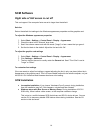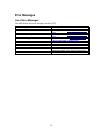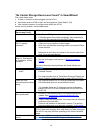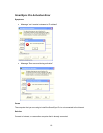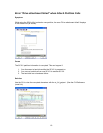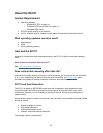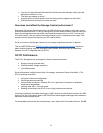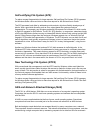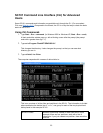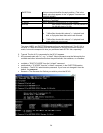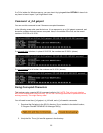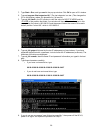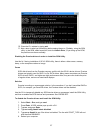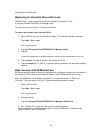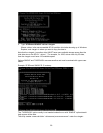Self-certifying File System (SFS)
To reduce request fragmentation for large requests, Self-certifying File System (SFS) bypasses
the Windows buffer cache and tries to make one request for the entire amount of data.
The SFS accesses hard disks by addressing entire extents, which are flexibly-sized groups of
blocks. With a good disk allocator such as ours, extent-based file systems minimize
fragmentation. For example, say Windows makes 64 KB requests for buffered I/O, which results
in eight I/O requests for 8 KB blocks. The SC101 SFS allocator, in comparison, searches chunks
of thirty-two 8KB blocks (before moving to sixteen 8KB blocks, before finally moving to eight 8KB
blocks). Often files are larger than the maximum Windows request size, so Windows’ files will
fragment. SFS avoids the fragmentation of Windows. The SFS allocator can use both first-fit and
best-fit algorithms, and typically outperforms Windows in terms of maximum blocks that can be
transferred at a time. All this makes it easy for the SC101 to stay “defragmented”, using its own
software.
Another non-Windows feature that reduces SC101 disk accesses is stuffed dinodes. In the
Windows NTFS disk management, the addresses for blocks are stored in a different place than
the blocks, themselves. This means that any request for NTFS disk data, no matter how small,
causes two I/O operations. Since hard disk I/O is far slower than your CPU or RAM, doubling the
amount of I/O can have a noticable impact on performance. Since SFS can store both the
address and the data in the same extent, the amount of I/O for very small files is cut in half.
New Technology File System (NTFS)
With conventional disk management such the NTFS used by Windows, disks are divided into
small, equally-size divisions called clusters; disk access is made for clusters, and a file may use
many clusters. This old practice is suited for programs with limited needs for disk performance, or
for low-level programs that handled their own disk access. Unfortunately, neither of these is true
of many modern software applications.
To reduce request fragmentation for large requests, Self-certifying File System (SFS) bypasses
the Windows buffer cache and tries to make one request for the entire amount of data. See Self-
certifying File Systems (SFS).
SAN and Network Attached Storage (NAS)
The SC101 is a SAN device. SAN disks run as an extension of a computer's operating system.
Computers that use the SC101 must have operating systems and software that are compatible
with the SAN.
A NAS is a more complicated device that has its own, small operating system. Sometimes
computers that have been converted just to be file servers are referred to as NAS devices.
Both technologies create disks that are accessed directly by many computers over a network.
The computers share the network resource. This reduces maintenance in large systems, and also
avoids having a single computer tied up answering requests for its data from all over a network.
22



